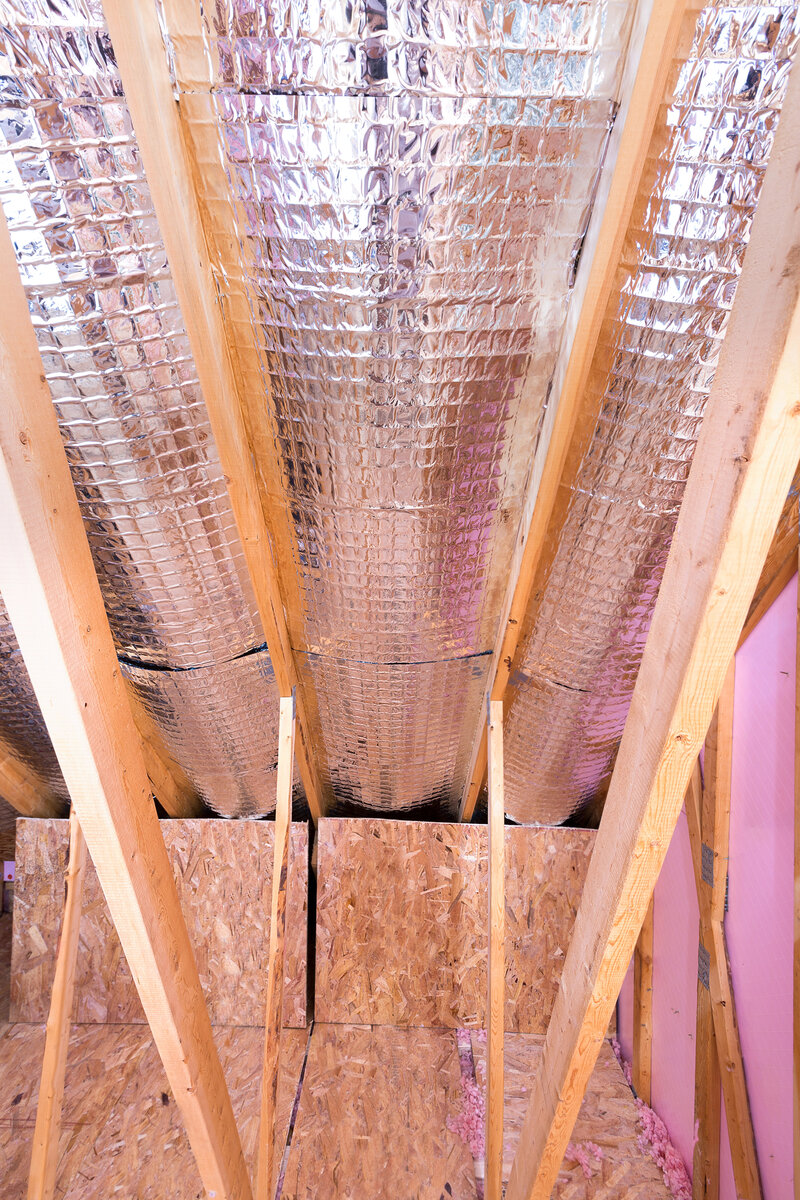 The roof of your home can be a weak link when it comes to energy efficiency and whole-home comfort. That’s where a radiant barrier comes into the picture.
The roof of your home can be a weak link when it comes to energy efficiency and whole-home comfort. That’s where a radiant barrier comes into the picture.
Not every home benefits, so the more you know about radiant barriers and how they work, the better you’ll be able to make an informed decision the next time you replace your roof or upgrade your attic insulation. When a radiant barrier benefits you, it’s well worth the investment.
When heat moves from one place to another, it’s called heat transfer. In the case of a home’s envelope, heat transfer happens in three different ways:
A radiant heat barrier blocks solar radiation and minimizes heat conduction, creating cooler living spaces and cheaper energy bills.
Radiant heat barriers are a reflective form of insulation. You may even use a very small version of a “radiant barrier” to block the sun coming in through your windshield after parking your car on a sunny day. The sunscreen's reflective, metallic-like surface reflects the sun’s UV rays away from your windshield, keeping the interior of your car far cooler than it would be without it. This same principle applies when you install a radiant heat barrier in your attic.
Much larger radiant barriers are installed in attic spaces but they work similarly, designed to minimize solar heat gain. Heat barriers reflect the heat caused by the sun’s UV rays back into the atmosphere and away from your home. During peak summer months, this notably cools the house and minimizes the energy consumed by the air conditioner and fans to cool the home.
According to energy.gov, “Some studies show that radiant barriers can reduce cooling costs 5% to 10% when used in a warm, sunny climate. The reduced heat gain may even allow for a smaller air conditioning system. ”
Without a professional inspection from a roofing or attic professional, there’s no sure way to tell whether your Bay Area home would benefit from a radiant heat barrier. If you live in a desert, radiant barriers are a no-brainer and may be included in the current building codes. However, the varying microclimates in and around the Bay Area mean some homeowners benefit from radiant barriers more than others.
If you decide your home would benefit from a radiant heat barrier, you must find the right people for the job. The best radiant barrier in the world can develop condensation, leading to moisture control issues - and diminishing whole-home comfort - if it’s not installed correctly or the barrier isn’t paired with high-quality insulation.
We mentioned energy.gov’s findings that when appropriate, proper installation of a radiant barrier in the attic can save homeowners up to 10% on annual cooling costs. However, they also warn about improperly installed materials or radiant barriers that aren’t paired with the right insulation. The article continues that depending on the home's location, it may be more “…cost-effective to install more thermal insulation than to add a radiant barrier.”
Only a professional roofing contractor or attic insulation installer can tell you for sure whether installing a radiant barrier is worth the investment. It’s essential that you partner with reputable professionals so you don’t become the victim of upselling that won’t benefit whole-home energy efficiency or comfort.
Would you like to learn more about whether a radiant heat barrier would benefit your Bay Area home? Contact the team at Attic Solutions. Scheduling an attic inspection is a wise move. In addition to determining whether you should invest in a radiant heat barrier, we can also assess whether your attic insulation is sufficient.
While we’re up there, we can also let you know if we notice anything else that needs attention, like HVAC or plumbing issues, roof leaks, or evidence of a rodent infestation. Keeping your attic healthy is essential to home comfort and energy efficiency, and we’re here to help keep your attic on track.